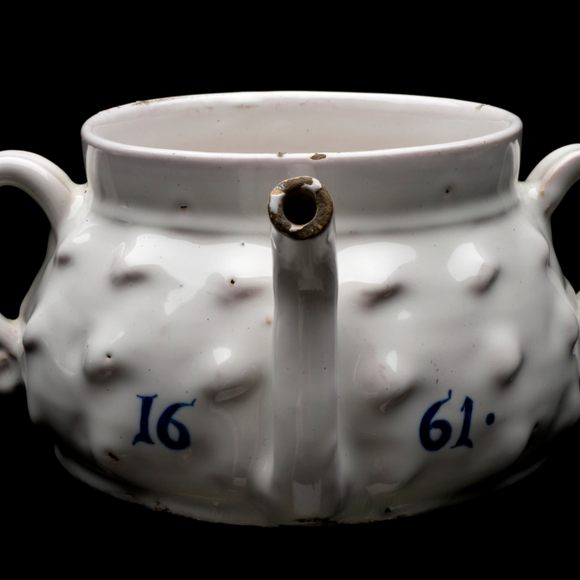Drinks
Posset
Consisting of spiced, curdled milk and lots of alcohol, this boozy bedtime drink dates back to the Middle Ages.
Consumed for both pleasure and health, the rich and frothy beverage known as posset dates back to the late Middle Ages, and shares many of the same qualities with sweet, thick drinks such as the syllabub and holiday eggnog. A popular after-dinner libation and sleep aid, posset was believed to cure all manner of ailments, including head colds, indigestion, and weakened stamina (the alcohol content may have had something to do with the last one). Due to its reputation as an aphrodisiac, some couples received posset on their wedding night.
Although varying posset recipes abound, the most common formula called for milk or heavy cream, sugar, spices such as cinnamon and nutmeg, and a significant quantity of sack, a sweet fortified wine. The milk or cream would be brought to a boil, curdled with alcohol, then served hot, often out of a specially made posset set. Using a teapot-like ceramic vessel, one would pour out and drink the liquid from the bottom, then eat the curds off the top.
Some of the most famous early recipes for posset were featured in the 1669 cookbook The Closet of Sir Kenelm Digby Knight Opened. One of the book’s recipes calls for the addition of “eighteen yolks of Eggs, and eight of the whites,” along with “three grains of Ambergreece [ambergris] and one grain of Musk.” Other posset variations throughout the 17th and 18th centuries featured orange, lemon, almonds, breadcrumbs for thickening, or even pepper to induce fever sweats. By the 19th century, however, posset had evolved into a chilled dessert custard, which is the form most modern versions take.
The benefits of posset are touted in several of William Shakespeare’s plays, with favorable mentions made in Hamlet and The Merry Wives of Windsor. More infamously, in Macbeth, Lady Macbeth drugs the possets of the guards in preparation for King Duncan’s murder.
Traditional, homemade posset is still enjoyed today, with a wide range of recipes available online and in historical cookbooks.
Written By
 Emily Linstrom
Emily Linstrom
Sources
- britishfoodhistory.com/2012/04/28/possets/
- www.smithsonianmag.com/arts-culture/pass-the-posset-the-medieval-eggnog-25860188/
- www.amazon.com/Food-History-Reay-Tannahill/dp/0517884046/ref=sr_1_1?ie=UTF8&qid=1536082097&sr=8-1&keywords=Food+in+History%2C+by+Reay+Tannahill
- Supersizers: Restoration
- www.theguardian.com/lifeandstyle/2016/apr/07/historic-recipes-sack-posset-a-rich-pudding-to-cure-all-ills
- wellcomecollection.org/works/ztweyk3r?query=posset
- wellcomecollection.org/articles/to-posit-the-posset/
- books.google.com/books?id=DL2yOIhKcgkC&printsec=frontcover&dq=posset+poshet&hl=en&sa=X&ved=0ahUKEwizo8T9vKLdAhVxhuAKHTINC8o4FBDoAQhHMAY#v=onepage&q=posset&f=false














